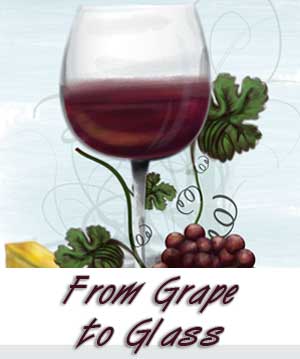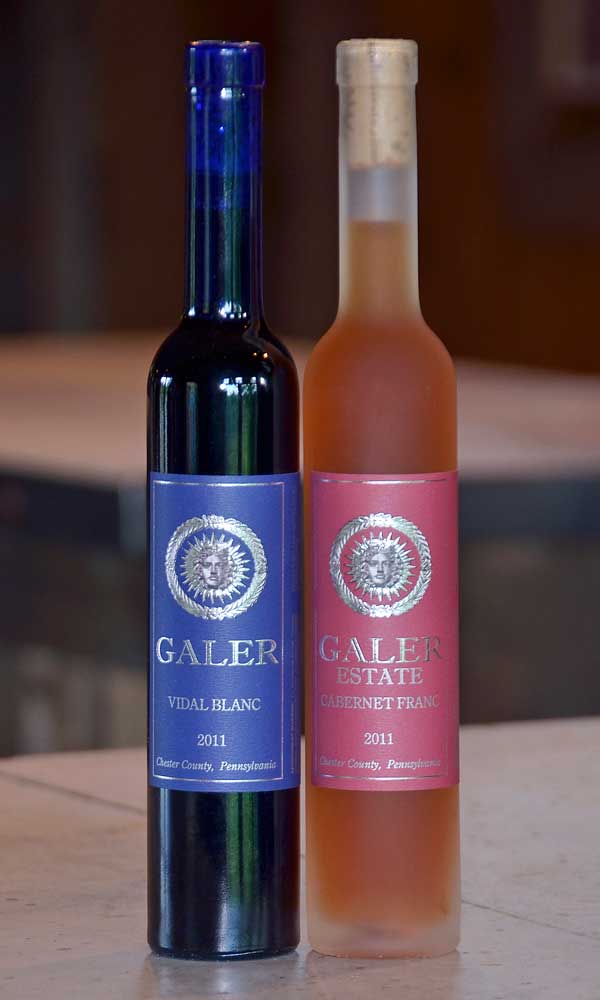By Catrina North, Columnist, The Times
 Ice wine has had somewhat of an accidental and brief history in the world of wine. The use of frozen grapes in wine production was mentioned by Pliny the Elder in ancient Roman times, but it seems to have been mostly forgotten until late 18th century eastern Europe. Ice wine, or eiswein, is now becoming more prevalent in the wine world and it is being produced in many areas of the world, including and not limited to Canada, New York, Germany, Austria, Michigan, Italy, Poland, Alsace, and even Pennsylvania.
Ice wine has had somewhat of an accidental and brief history in the world of wine. The use of frozen grapes in wine production was mentioned by Pliny the Elder in ancient Roman times, but it seems to have been mostly forgotten until late 18th century eastern Europe. Ice wine, or eiswein, is now becoming more prevalent in the wine world and it is being produced in many areas of the world, including and not limited to Canada, New York, Germany, Austria, Michigan, Italy, Poland, Alsace, and even Pennsylvania.
So, what is an ice wine and what makes it special? To produce a true ice wine, grapes must be left to ripen on the vine until they freeze solid, usually into late December or January, long after the grapes for still wine had been harvested. Ice wine grapes are harvested during the coldest part of the night and taken immediately to the winery to be pressed.
Pressing ensures that the water crystals stay behind and all that is yielded is an extremely rich and concentrated juice that is very limited in quantity and extremely slow extracting. This precious nectar is then very slowly fermented to produce a sweet, elegant and flavorful dessert wine. Ice wine is traditionally made from Riesling, Vidal Blanc, or Cabernet Franc. Canada is the world’s leading producer of ice wine, where 75% of the production comes from Ontario, and the remainder from British Columbia. True ice wine is produced in Pennsylvania on occasion, most notably at Galen Glen Winery, located in the Lehigh Valley, when weather allows.
Ice wines tend to have a hefty price tag attached to them. This high price tag is cumulative result of high risk agriculture and the careful handling required to produce this low yielding wine. Ice wine traditionally comes in half bottles and should be enjoyed as dessert or an accompaniment to a not-too-sweet dessert or strong cheeses. A 375 ml bottle of wine will serve 12 people and should be served chilled.
Weather conditions must be cold enough for the grapes to freeze on the vine, which makes ice wine production a risky investment in the face of a changing global climate. As a result, many growing regions, south eastern Pennsylvania included, have begun to use modified traditional ice wine methods to produce a wine known as “icebox wine.”
At Galer Estate, our grapes are picked later in the season, but usually prior to the first frost, and taken to a commercial freezer to be frozen. They are then taken out of the freezer when the outside temperature is appropriate for pressing, usually in late January or February, and they are processed in the same manner as traditional ice wines. The weather forces a different method but the outcome is the same: very rich and concentrated juice that gets fermented into elegant, opulent, and balanced dessert wine.
Galer Estate produces both Vidal Blanc and Cabernet Franc icebox wines. 2011 Vidal Blanc ($35) is very rich with flavors suggesting pineapple, butterscotch, and peaches with balanced and yummy acidity. Our 2011 Cabernet Franc Icebox wine ($42) is very opulent and naturally sweet with flavors of fresh strawberry preserves, kiwi, jasmine, and apricots with a finely structured and lush palate.
Galer Estate Vineyard and Winery ice wines have fetched a fair bit of critical success. The 2010 Vidal Blanc won Best in Show at the 2012 NextGen wine competition in Sonoma as well as double gold, as well as a double gold at the 2012 Pennsylvania Wine Association Competition. The team at Galer is especially proud of their 2011 Cabernet Franc icebox wine, it went off to Napa to the International Women’s Wine Competition and came back with a best in class medal and Best in Show for the dessert wine competition.
Icebox wines are always in limited supply at Galer Estate, so stop by the tasting room to try them as soon as you can. Cheers!
Catrina North is the award winning winemaker for Galer Estate Vineyard and Winery in Kennett Square as well as wine consultant to various regional wineries. With over 50 major award for their wine in only two years, Catrina has established a stellar reputation for winemaking excellence. Catrina came to Galer Estate from Wente Vineyards in California. After graduating from Gettysburg College, Catrina studying enology and viticulture in Australia and Washington state. After completing her degree, she made wine in New York, Washington, Australia, California, and then came to the Brandywine Valley in Pennsylvania to help establish it as a world class winegrowing region.







